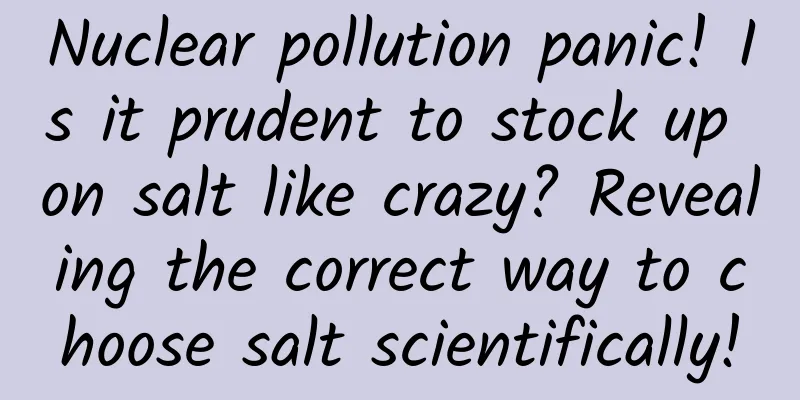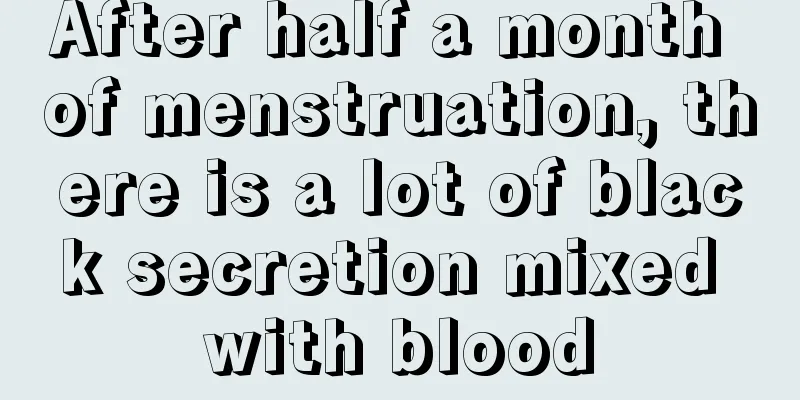Nuclear pollution panic! Is it prudent to stock up on salt like crazy? Revealing the correct way to choose salt scientifically!

|
Recently, due to the discharge of nuclear contaminated water into the sea by Japan, some people may have started frantically "buying salt" and "hoarding salt" out of concern. However, this behavior is neither scientific nor necessary! As the country with the largest raw salt production capacity and output in the world, China's salt product structure consists of 87% mine salt, 10% sea salt and 3% lake salt . The production of mine salt and lake salt is not affected by Japan's nuclear pollution. The picture comes from the Internet So everyone can rest assured that our country's edible salt production is sufficient and there is no need to stockpile salt. Next, let’s take a look at the types of salt and how to choose it scientifically! Types of salt Regardless of what kind of salt, according to the source of raw materials, it can be divided into sea salt, lake salt, well salt, and mineral salt. According to the processing technology and whether it is purified, it can be divided into coarse salt and fine salt (also called refined salt). 1. Sea salt As the name suggests, it is salt made from seawater. The processing method of sea salt is relatively simple, that is, seawater is introduced into the salt field, and the salt is made through natural sun exposure. The outer packaging has the word "sea" logo. The picture comes from the Internet 2. Lake salt Some salts are made from naturally dried or processed salts from inland saltwater lakes, and most of them have the word "lake" on the outer packaging. 3. Well salt The salt in the strata dissolves in groundwater. The groundwater is pumped out by digging wells and processed to make table salt, which is called well salt. 4. Mineral salt Mineral salt refers to salt that is processed from salt mines mined from underground. It is buried 100 to 3,000 meters underground and needs to be drilled, dissolved by water injection, and extracted to be processed. Due to the improvement of drilling technology and drying technology, the output of mineral salt has increased sharply. The picture comes from the Internet 5. Iodized refined salt Iodine is a mineral element that our body needs. If we lack iodine, it will cause some diseases, such as goiter. If you live in a coastal city and eat a lot of seafood, you don't need to choose iodized salt. But if you don't eat enough seafood or live in an iodine-deficient area, it is recommended to use iodized salt. Can you really prevent nuclear radiation by eating iodized salt? The answer is no! You can't! The trace iodine contained in the salt we often eat has a certain effect on nuclear radiation, but because the content is very low, it is difficult to play a role in preventing radiation , and eating too much salt will also affect your health. Therefore, panic buying salt will not have any substantial effect on alleviating nuclear radiation incidents. How to distinguish the quality of salt? First, check the outer packaging of the salt to see if there is an anti-counterfeiting mark. Check whether the seal of the salt is neat and the serrations are uniform. Second, check the nutritional information on the salt package. High-quality salt should contain appropriate amounts of iodine and minerals such as potassium and magnesium. Third, check whether the salt's granular shape and color are uniform. High-quality salt should be white or slightly yellowish granular, without impurities and uneven color. Fourth, smell the salt. To identify the smell of salt, you can take a proper amount of salt, grind it into powder, and smell it immediately. Generally speaking, good salt has no smell, ordinary salt has no smell or has a slight odor, and poor salt has a peculiar smell or other additives. The picture comes from the Internet How much salt should you consume every day? The World Health Organization's "Sodium Intake for Adults and Children" recommends that healthy adults consume less than 5 grams of salt per day. If you are not sure about the number of grams, you can use a beer bottle cap as a reference. You can use salt to fill a beer bottle cap without overflowing, which is about 5 grams. Therefore, do not eat too much salt. If you eat too much, you will risk high blood pressure. This is because salt contains sodium chloride, which can cause fluid retention in the body. If the body's foreign body exceeds the standard, it will increase blood vessel pressure, thereby endangering our health and increasing the burden on the kidneys. |
<<: [Light ≠ Thin] Does meeting the weight standard mean you are not fat? Not necessarily!
>>: What to do if Helicobacter pylori is positive during physical examination
Recommend
Causes and suggestions for memory loss after childbirth
We all know that people's memory will gradual...
Which province is the most serious besides Hubei? When will the epidemic outside Hubei end?
Which province has the most serious epidemic situ...
Why did I bleed again on the fourth day after curing my uterus?
Everyone knows that curettage is a gynecological ...
Where is the origin of the girl fruit? What are the effects and functions of the girl fruit?
Girl fruit is the fruit of the plant Physalis of ...
Can the car idle speed be adjusted? How to adjust the car idle speed down?
Idle speed refers to the working condition of the...
MarketingCharts: 1/2 of smartphone and tablet users prefer mobile Internet
According to a survey conducted by Prosper Mobile...
Is it good for pregnant women to sweat after giving birth?
Postpartum sweating is actually necessary, becaus...
New research finds that eating this kind of food can improve your liver!
Recent studies have shown that eating a diet rich...
What are the symptoms of uterine cold in traditional Chinese medicine
Uterine cold is the most common gynecological dis...
A big lump grows next to my vulva and it hurts
The private part is a very sensitive part of the ...
Taking Yasmin makes my breasts bigger
Will taking Yasmin make your breasts bigger? It i...
Can I drink coffee before my period?
Coffee is a beverage that many friends like to dr...
Is it necessary to have a uterine curettage if the abortion is incomplete?
Medical abortion is a common method of abortion n...
Silver Age Health | Elderly People and ALS
There was a video challenge that went viral onlin...
What causes lower abdominal pain during pregnancy? Expectant mothers need to understand
After a woman becomes pregnant, she will experien...









